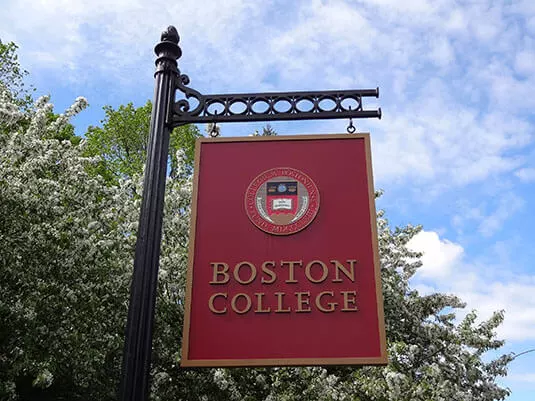Students who attended the September 12th Welcome Event for the Boston College Master of Science in Applied Economics (MSAE) program may have been a little shocked to hear the opening statement from the event’s speaker. “All resumes look the same – even yours,” said Michael Finegold, Chief Data Scientist at Fulcrum Analytics.
In a talked entitled, “They Can’t Automate Everything: Why You Still Need Humans to Do Data Science,” Dr. Finegold addressed how students in the MSAE program can future-proof their careers and stand out as professionals in the field of data science.
“You have to ask yourself: how can I add value? It goes beyond analyzing data,” said Dr. Finegold. “The coding, statistical, and business skills are just the start.”
The BC MSAE program, now in its third year, welcomed 29 new students for its August 2018 enrollment start, bringing the total number of active students in the program to 72. Every September, the new and continuing students in the program gather for a master lecture to help kick-off the academic year and connect what they are learning in classes to what they hope to do as professionals. Students in the program seek more than theory and economic principles – they are eager for hands-on projects that attempt to solve real-world problems using real-world data and evidence.
“Some of the students in the program tell me that they are surprised that they spent so much time just identifying data sources, and cleaning and organizing data for analysis,” said Dr. Sasha Tomic, Program Director of the BC MSAE program. “I always make sure they know – that is exactly what it is like on the job. A lot of time goes toward getting one set of data to ‘talk to’ another set of data, for example. It can take a lot of creativity.”
Dr. Finegold agrees. In his work at Fulcrum Analytics, he is in charge of the research and development of new analytical solutions to take advantage of the variety and quantity of data now available.
“Our goal is to develop an optimized end-to-end process – focusing investment and effort where it is likely to add value. Timeliness and efficiency matters. What kind of internal and external data is going to make a material difference – and is worth the time, money, and integration effort? At what point in the modeling process do we move from intensive hands-on work to automated refinements with minimal monitoring? When is it working well enough to start making recommendations? How do we make the trade-offs between interpretable results and optimized prediction? How do we communicate results to end-users? These are the kinds of questions that require critical thinking from data scientists.”
“We are very fortunate to have Dr. Finegold as our speaker this year,” said Dr. Tomic. “His message is very timely and just what the students should hear. Our program of course teaches students how to master the technical work involved in big data analysis. But the program is designed to help students learn how to generate strategic insights from the technical work and then deliver those insights in the most meaningful and compelling way possible. Dr. Finegold’s message perfectly underscores our mission.”
“This is creative and iterative work between humans,” said Dr. Finegold. “You can’t just program something in and wait for results. You are as much a consultant as an analyst. You learn to listen to your client at the start of the project to determine the real needs and root issues, and you learn to incorporate feedback along the way. At the end of the day, the work has to be meaningful if it is to be implemented.”
His parting advice for the students: “You want to be able to demonstrate your past work so that people can see how you think, determine what level of creativity or problem-solving you can bring to the task, and describe how working with you will be different from just running a statistical model.”
